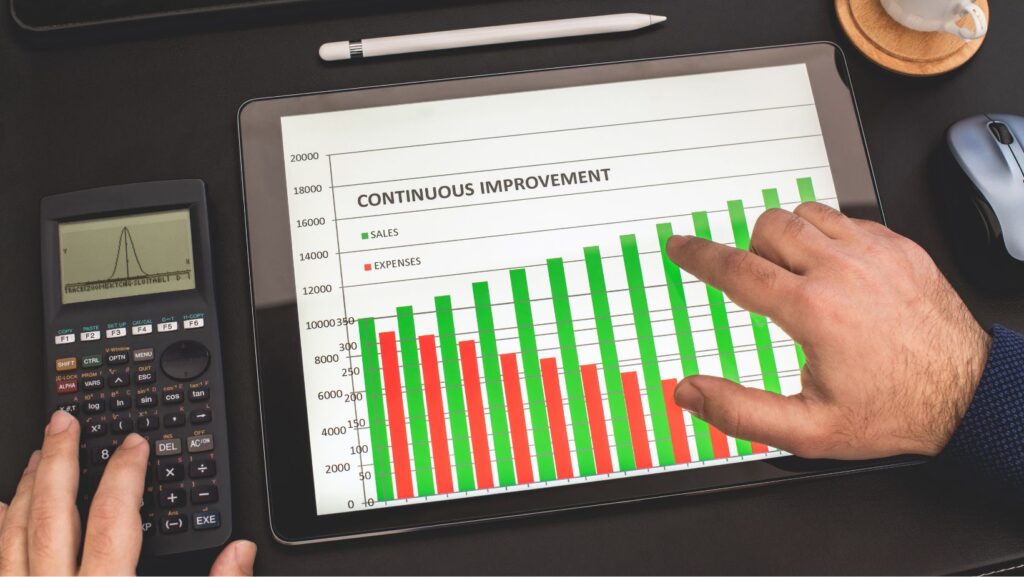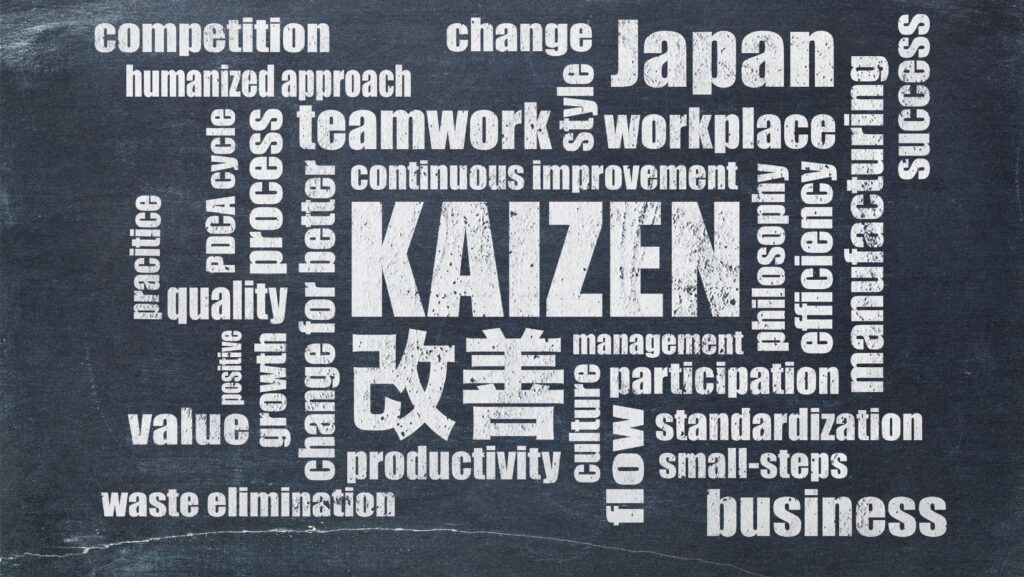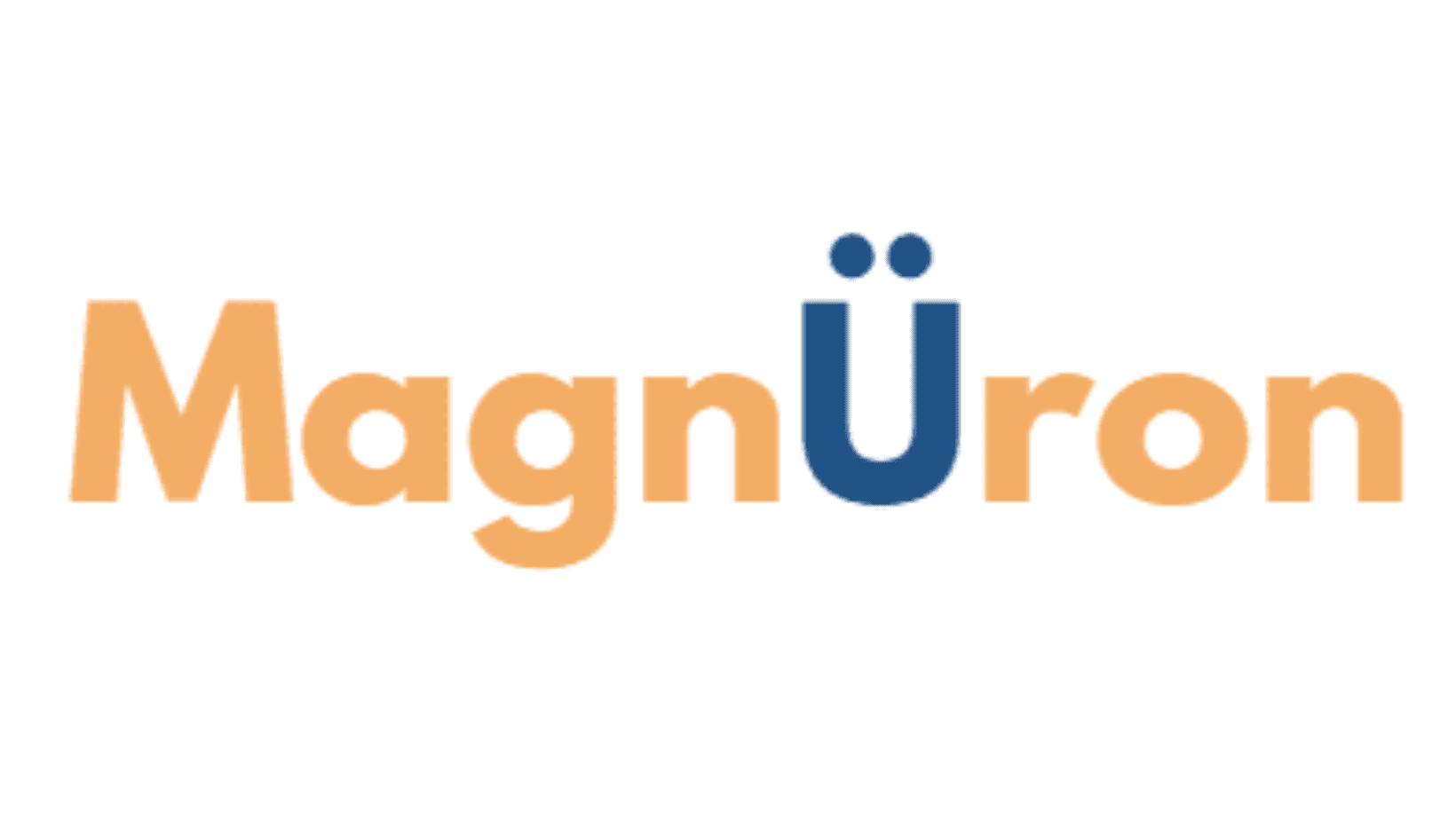Lean Principles: Streamlining Your Small Business Operations

Efficiency is critical to success in today’s competitive business environment, especially for small businesses.
Small business owners can use lean principles to optimize their operations, decrease expenses, and boost customer satisfaction.
In this post, we’ll look at the history of lean principles, the value of these ideas for small businesses, and practical examples and tips for adopting these principles in your own business operations.
History of Lean Principles

The origins of lean concepts can be traced back to the early twentieth century, having roots in a variety of industries and management ideologies.
Several significant milestones and contributions from various individuals and industries may be traced back to the emergence of lean principles.
The work of Frederick Winslow Taylor, the father of scientific management, was one of the initial impacts on lean principles.
Taylor established the notion of “time and motion studies” in the early 1900s to examine and optimize worker productivity.
His focus on efficiency and waste reduction paved the way for future lean techniques.
Henry Ford changed the vehicle manufacturing sector during the 1920s and 1930s by establishing the assembly line production system at Ford Motor Company.
Because it expedited the manufacturing process and reduced waste, this innovation enabled mass manufacture of automobiles at a lower cost.
Ford’s emphasis on standardization and continuous flow impacted later lean principles such as just-in-time (JIT) production and total quality management (TQM).
Toyota Motor Corporation in post-World War II Japan was the next major breakthrough in lean principles.
Toyota’s founders, Sakichi Toyoda, Kiichiro Toyoda, and Taiichi Ohno, created the Toyota Production System (TPS) in response to the country’s resource restrictions and economic concerns at the time.
TPS combined ideas from Taylor’s scientific management and Ford’s assembly line manufacturing, as well as unique developments such as JIT and the pull production system.
Quality management gurus such as W. Edwards Deming, Joseph Juran, and Philip Crosby contributed to the creation of lean principles in the 1970s and 1980s by emphasizing continuous improvement, employee involvement, and customer-focused process optimization.
Deming, in particular, advocated for the Plan-Do-Check-Act (PDCA) cycle and statistical process control, which helped to lay the groundwork for the Kaizen approach to continuous improvement.
John Krafcik invented the term “lean” in his 1990 article “Triumph of the Lean Production System.” Later, in their seminal book, “The Machine That Changed the World,”
James P. Womack, Daniel T. Jones, and Daniel Roos popularized lean ideas by comparing the performance of several vehicle manufacturers around the world.
Toyota’s TPS was acknowledged as the most efficient and successful production system, inspiring firms across industries to adopt lean principles.
Key Lean Principles for Small Businesses

Value
Value, in the context of lean principles, is defined from the customer’s perspective. Identifying the aspects of your products or services that customers find valuable is essential for streamlining your operations.
Focusing on these elements, you can prioritize improvements and eliminate processes that do not add value to the end product.
Example: A small bakery may identify that customers value freshness and unique flavors in their baked goods. By prioritizing these aspects, the bakery can focus on sourcing high-quality ingredients and developing innovative recipes, while minimizing time spent on non-value-adding tasks such as excessive packaging.
Value Stream
Mapping the value stream involves identifying all the steps involved in delivering your product or service, from raw materials to the final product in the hands of the customer.
Understanding the value stream, you can pinpoint areas of waste and inefficiency, allowing you to make targeted improvements..
Example: Creating a value stream map for detailing a car in a mobile detail business involves analyzing and visualizing the process from the customer’s initial contact to the completion of the detailing service.
Here’s a step-by-step breakdown of the value stream map
Business: Mobile Detailing Business
Customer contacts the business
- Information: Customer provides contact information and vehicle details
- Action: Business records customer information and service request
Schedule an appointment
- Information: Business checks availability and proposes appointment slots
- Action: Customer selects a preferred time slot, and appointment is confirmed
Route planning
- Information: Business reviews scheduled appointments for the day
- Action: Optimize travel route to minimize travel time and fuel consumption
Preparing for the appointment
- Information: Business checks inventory for required supplies and equipment
- Action: Pack supplies and equipment needed for the specific service
Arrival at customer’s location
- Information: Business confirms the appointment and location with the customer
- Action: Set up the equipment and prepare the workspace
Perform the detailing service
- Information: Follow standardized procedures for the specific detailing service
- Action: Clean, polish, and protect the vehicle’s interior and exterior as required
Quality check
- Information: Review the completed work to ensure quality and consistency
- Action: Address any issues or rework as needed
Customer review and approval
- Information: Present the completed service to the customer for inspection
- Action: Address any concerns or additional requests from the customer
Payment and feedback
- Information: Provide the customer with an invoice for the service
- Action: Collect payment and ask for feedback or reviews
Post-service follow-up
- Information: Record customer feedback and service details for future reference
- Action: Analyze feedback for continuous improvement opportunities
This value stream map provides an overview of the entire mobile detailing process, from scheduling to service completion.
Analyzing this map, you will be able to identify potential areas of waste, inefficiencies, and opportunities for improvement.
Flow
Creating smooth processes without interruptions is critical to improving efficiency.
Reducing waiting time and inventory, you can enhance the flow of operations and ensure that value is added at every stage.
This involves analyzing your processes and finding ways to minimize delays, bottlenecks, and other obstacles to smooth workflow.
Example: A small manufacturing company might identify bottlenecks in its production line, where one process takes longer than others and causes delays. Addressing and exploiting these bottlenecks, either through process redesign or equipment upgrades, the company can improve overall flow and reduce lead times.
Pull
The pull principle revolves around production based on customer demand rather than forecasting.
This approach reduces overproduction and excess inventory, leading to cost savings and more efficient use of resources.
Focusing on actual customer needs, you can avoid waste and respond more effectively to changes in demand.
Example: A small clothing boutique can implement the pull principle by ordering new stock based on actual sales data rather than seasonal trends. This approach reduces the risk of overstocking unpopular items and helps the boutique respond quickly to changing customer preferences.
Continuous Improvement
Continuous improvement, or Kaizen, involves constantly seeking ways to enhance your operations and eliminate waste.
Fostering a culture of continuous improvement, you can engage employees in the improvement process and drive ongoing innovation and growth.
Example: A small marketing agency can hold regular brainstorming sessions with employees to identify potential improvements in project management, communication, and client relations. By encouraging employee feedback and implementing suggested improvements, the agency can continuously optimize its processes and stay ahead of the competition.
How Lean Principles Can Benefit Small Businesses

Improved efficiency and productivity
Identifying and eliminating waste, lean principles can significantly improve the efficiency of your operations. This, in turn, can lead to increased productivity and overall business performance.
Example: A small coffee shop that implements lean principles may see improvements in order processing times, inventory management, and employee productivity, ultimately resulting in higher customer satisfaction and increased revenue.
Cost reduction
Lean principles help reduce costs by minimizing waste, optimizing resource utilization, and streamlining processes.
Focus on value-added activities and cutting out unnecessary steps then small businesses can save money and improve their bottom line.
Example: A small manufacturing firm that embraces lean principles may see a reduction in material waste, lower inventory carrying costs, and improved machine utilization, leading to significant cost savings and increased profitability.
Enhanced customer satisfaction
Prioritizing customer value and improving the efficiency of your operations, you can deliver higher-quality products and services more quickly. This can lead to increased customer satisfaction and loyalty, helping your business grow and thrive.
Example: A small software development company that applies lean principles to its development process may be able to deliver higher-quality software faster, leading to more satisfied clients who are likely to refer the company to others.
Encouragement of innovation and growth
A continuous improvement culture encourages employees to think creatively and seek new ways to optimize operations.
This can drive innovation and growth, setting your business apart from the competition.
Example: A small graphic design agency that fosters a continuous improvement culture might see its employees coming up with innovative design techniques, better project management approaches, or more efficient communication tools, leading to growth and an enhanced reputation in the industry.
Practical Tips for Implementing Lean Principles

Assess your current operations
Evaluating your current processes and identifying areas of waste, inefficiency, or bottlenecks, it will help you pinpoint the most significant areas for improvement.
Identify areas for improvement
Based on your assessment, choose specific processes or aspects of your operations that could benefit from lean principles.
Center on areas with the greatest potential for improvement and impact on your bottom line.
Engage and train employees on lean principles
Involve your employees in the lean transformation process.
Educate them on lean principles and encouraging their participation in improvement initiatives. This will help create a culture of continuous improvement and ensure the success of your lean efforts.
Set measurable goals and track progress
Establish clear, measurable goals for your lean initiatives, such as reduced lead times, decreased waste, or increased customer satisfaction.
Regularly track your progress against these goals to ensure that your efforts are producing the desired results.
Continuously re-evaluate and refine processes
Lean is an ongoing journey, not a one-time project. Continually re-evaluate your processes and look for opportunities to refine and improve them.
This will help you maintain a competitive edge and drive long-term success.
Work Breakdown Structure (WBS): Lean Principles

Business: Mobil Detailing Business
Assess Current Operations
- 1.1. Identify customer value
- 1.2. Map value stream
Implement Lean Principles
- 2.1. Reduce waste
- 2.1.1. Optimize scheduling
- 2.1.2. Streamline inventory management
- 2.2. Improve process flow
- 2.2.1. Standardize cleaning procedures
- 2.2.2. Implement efficient equipment usage
- 2.3. Adopt pull principle
- 2.3.1. Align service offerings with demand
- 2.3.2. Adjust staffing based on demand
Continuous Improvement
- 3.1. Establish improvement culture
- 3.2. Implement Kaizen approach
- 3.2.1. Regular team meetings
- 3.2.2. Employee training
- 3.2.3. Performance metrics and monitoring
Measure and Evaluate Results
- 4.1. Establish Key Performance Indicators (KPIs)
- 4.2. Monitor progress
- 4.2.1. Track service quality
- 4.2.2. Measure customer satisfaction
- 4.2.3. Analyze financial performance
All business can use all or some of these lean principles, and is subjective to the vision and goals of the owners.
Final Thoughts
Lean principles have a rich history that spans across multiple industries and management philosophies.
They have evolved over time to become an essential part of modern business operations, offering a competitive advantage to organizations that adopt these principles.
Focusing on efficiency, waste reduction, and continuous improvement, lean principles enable businesses to streamline their operations and deliver greater value to their customers.
Businesses continue to strive for operational excellence, the combination of lean principles with other process improvement methodologies, such as Six Sigma, offers even more potential for optimization.
The integration of these two powerful methodologies, often referred to as Lean Six Sigma, can bring about significant improvements in both process efficiency and quality.
We will delve deeper into Lean Six Sigma and explore how this powerful combination can further enhance your business operations and drive exceptional results.
Bio:

Ronnie Patterson
Ronnie Patterson, founder of MagnÜron, is a multifaceted entrepreneur with a diverse background in music, electronics engineering, and engineering management. Drawing on experience across various industries, He offers expertise in SEO, operations, and strategy to help businesses thrive. Possessing a unique perspective and unwavering commitment to collaboration, and ideal partner for growth and success.






